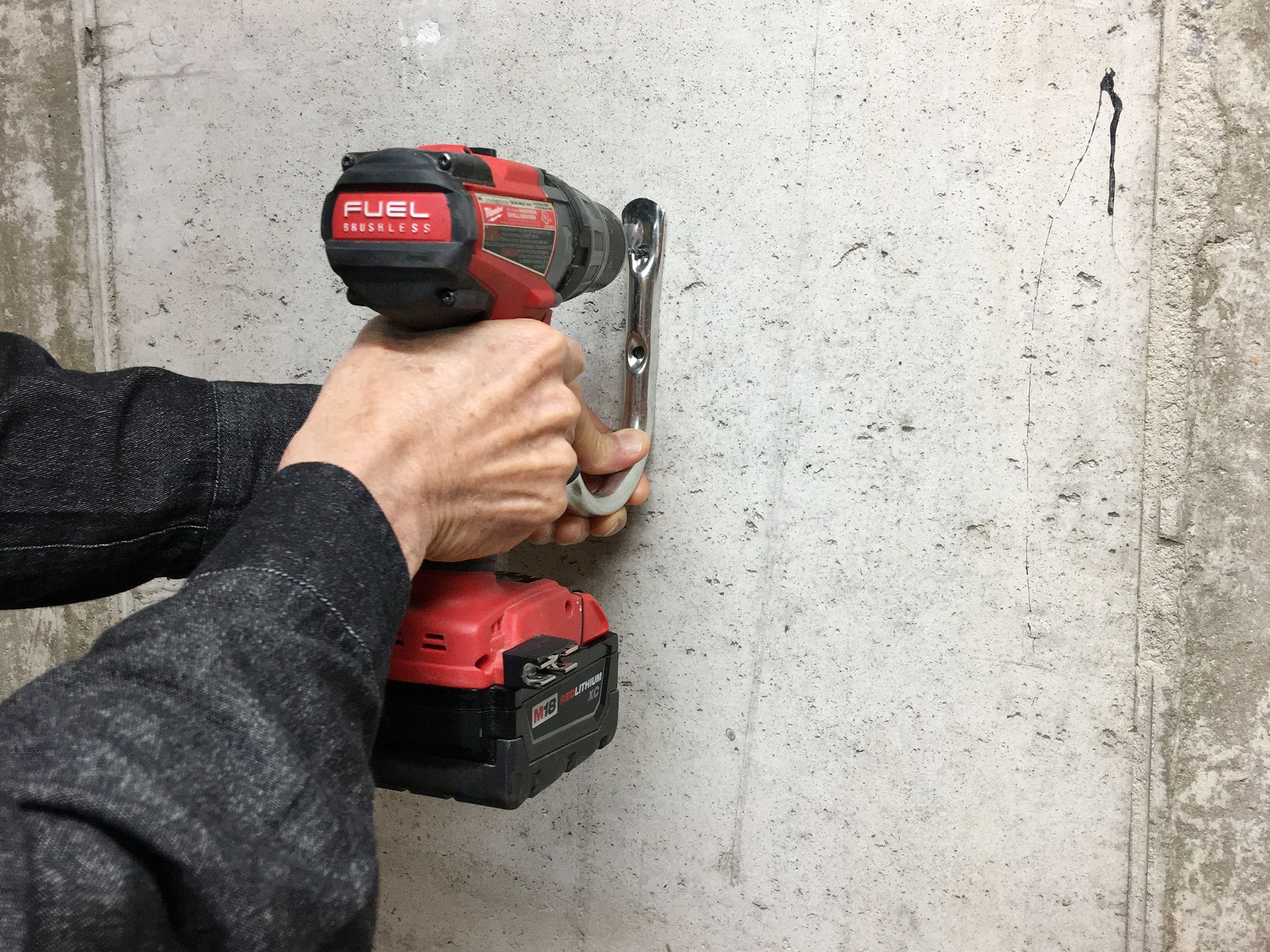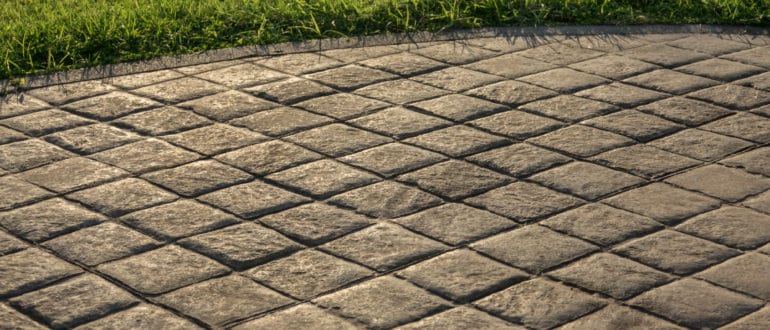How Does Garbage Disposals Work? Step-by-Step Guide
Garbage disposals are a marvel of modern convenience, quietly churning away the remnants of our meals with seemingly effortless efficiency.
But have you ever wondered exactly how these under-sink wonders do their job? In this comprehensive guide, we will take a detailed look at How Garbage Disposals work and a step-step breakdown of how to install a garbage disposal for the first time.
Table of contents
- What is a Garbage Disposal?
- Components of a Garbage Disposal
- Safety Guidelines for Using a Garbage Disposal
- How Does Garbage Disposal Work?
- How to Install a Garbage Disposal for the First Time
- Installing a Garbage Disposal Step-by-Step Guide:
- Turn off Water Supply:
- Remove Old Disposal (if applicable):
- Prepare the Sink Opening:
- Install Mounting Ring:
- Connect Dishwasher Drain Line (if applicable):
- Connect Drain and waste Line:
- Connect Electrical Cord:
- Test for Leaks:
- Run the Garbage Disposal:
- Clean Up:
- Do I need a plumber to install a garbage disposal?
- Things You Should Never Put in a Garbage Disposal
- Factors to consider when Selecting a Garbage Disposal
- How Does Garbage Disposals Work FAQs
- Conclusion
- References
- Recommendations
What is a Garbage Disposal?
A garbage disposal, also known as a waste disposal unit, is a plumbing appliance that grinds up food waste and other organic materials into a fine slurry that can be safely flushed down the drain. It is a common appliance in North America, Australia, and New Zealand kitchens.
Garbage disposals are powered by a motor that drives a rotating impeller and grinding ring. The impeller pushes food scraps into the grinding ring, shredded into a fine slurry. Water is run into the disposal while grinding to help flush the slurry down the drain.
Garbage disposals can help to reduce food waste, which can be a valuable resource if it is composted or used to create animal feed. They can also help keep sinks clean by grinding food scraps that would otherwise clog drains.
Read Also: Can You Get Stains Out of Clothes After They’ve Been Washed?
Components of a Garbage Disposal
A garbage disposal is a kitchen appliance that grinds food scraps and other organic waste into a fine slurry that can be safely flushed down the drain.
It is a common household appliance that helps to reduce food waste and keep sinks clean.
Here are the main components of garbage disposal:
1. Motor:
The motor is the heart of the garbage disposal, providing the power to spin the grinding blades. It is typically a heavy-duty induction motor that can handle the rigours of grinding food waste.
2. Grinding Chamber:
The grinding chamber is the enclosed space where the food waste is ground up. It is typically made of durable stainless steel or cast iron to withstand the wear and tear of grinding.
3. Grinding Ring:
The grinding ring is a stationary metal ring with sharp teeth that line the inside of the grinding chamber. The grinding blades rotate against the grinding ring to shred the food waste.
4. Grinding Blades:
The grinding blades are the sharp, rotating metal pieces that do the actual grinding of the food waste. They are typically made of hardened steel and designed to break down food scraps into a fine slurry efficiently.
5. Impeller:
The impeller is a metal disc with blades that help to push the food waste towards the grinding ring. It also helps to create a swirling motion in the grinding chamber, which helps to break up the food waste more effectively.
6. Splash Guard:
The splash guard is a rubber or plastic cover that fits over the top of the garbage disposal. It helps to prevent food scraps and water from splashing out of the disposal while it is in use.
7. Flywheel:
The flywheel is a heavy metal disc that helps to store energy and keep the motor running smoothly. It also helps to prevent the blades from stopping suddenly, which can cause damage to the disposal.
Safety Guidelines for Using a Garbage Disposal
- Never put your hands or fingers in the garbage disposal while running.
- Do not use the garbage disposal to grind up hard or non-biodegradable materials, such as bones, glass, or metal.
- Run cold water while using the garbage disposal to help flush the food waste down the drain.
- Avoid putting excessive amounts of food waste in the disposal at one time.
- Clean the garbage disposal regularly to prevent the buildup of food scraps and odours.
- If the disposal is making strange noises or not working properly, unplug it and call a qualified appliance repair technician.
By following these safety guidelines, you can ensure that you use your garbage disposal safely and effectively.
Read ALso: Steps to Building a House – How House Construction Works
How Does Garbage Disposal Work?
A garbage disposal manages waste by grinding food scraps and other organic materials into a fine slurry that can be safely flushed down the drain. This process helps to reduce food waste and keep sinks clean.
Here’s how a garbage disposal works:
- Food Scraps Enter the Grinding Chamber: When you turn on the garbage disposal, the impeller pulls food scraps into the grinding chamber, a rotating metal disc with blades.
- Grinding Blades Break Down Food Scraps: Inside the grinding chamber, sharp grinding blades rotate against a stationary grinding ring, shredding the food scraps into smaller and smaller pieces.
- Impeller Forces Food Scraps Towards Grinding Ring: The impeller continues to rotate, pushing the food scraps towards the grinding ring, ensuring thorough grinding.
- Flywheel Maintains Smooth Operation: A flywheel, a heavy metal disc, stores energy and helps maintain a smooth rotation of the grinding blades, preventing sudden stops or jams.
- Water Flushes Slurry Down the Drain: As the blades grind the food scraps, cold water should be run to help flush the fine slurry down the drain.
- Overload Protection Shuts Off Motor: Garbage disposals have overload protection that shuts off the motor if it detects too much food waste or a jam, preventing damage to the removal.
- Splash Guard Prevents Splashes: A splash guard, typically made of rubber or plastic, fits over the top of the disposal, preventing food scraps and water from splashing out while it’s in use.
Proper use and maintenance of garbage disposal are essential to ensure its effectiveness and longevity. Avoid overloading the disposal, grinding hard or non-biodegradable materials, and regularly clean the removal to prevent odours and buildup.
How to Install a Garbage Disposal for the First Time
Installing a garbage disposal for the first time can be straightforward if you have the right tools and follow the steps carefully. Here’s a comprehensive guide on how to install a garbage disposal:
Gather the Necessary Tools and Materials:
- Garbage disposal unit (ensure it matches your sink model and plumbing configuration)
- Plumber’s putty or silicone sealant
- Adjustable wrench or socket wrench
- Phillips screwdriver
- Flashlight
- Bucket or pan to catch water
Installing a Garbage Disposal Step-by-Step Guide:
Turn off Water Supply:
Locate the shutoff valves under the sink, usually one for hot and cold water. Turn both valves clockwise until they stop, completely shutting off the water supply to the sink.
Remove Old Disposal (if applicable):
If replacing an existing garbage disposal, place a bucket or pan under the sink to catch any residual water. Disconnect the drain line from the old disposal using the adjustable wrench. Unscrew the mounting ring from the underside of the sink using the screwdriver. Remove the old disposal from the sink opening.
Prepare the Sink Opening:
Clean the sink opening thoroughly to remove any debris or old sealant. Apply a generous amount of plumber’s putty or silicone sealant around the sink opening, creating a smooth, even seal.
Install Mounting Ring:
Carefully insert the mounting ring from the underside of the sink, ensuring the rubber gasket is properly seated against the sink opening. Tighten the mounting ring from above the sink using the screwdriver.
Connect Dishwasher Drain Line (if applicable):
If your dishwasher’s drain line connects to the garbage disposal, locate the appropriate inlet on the new disposal and attach the dishwasher drain line using a hose clamp.
Connect Drain and waste Line:
Attach the drain line from the sink to the outlet on the garbage disposal using the provided coupling or hose clamp. Ensure the connection is tight and secure.
Connect Electrical Cord:
Plug the electrical cord of the garbage disposal into the dedicated outlet under the sink. Ensure the connection is firm and secure.
Test for Leaks:
Slowly turn the water supply valves on and check for leaks around the connections. Tighten any loose connections if necessary.
Run the Garbage Disposal:
Turn on the garbage disposal and run cold water to test its operation. Ensure the disposal is grinding food scraps effectively and there are no leaks.
Clean Up:
Dispose of any used plumber’s putty or sealant. Clean the sink and surrounding area to remove any debris.
Read ALSO: How Selling a House Works | What to Know Before Selling
Do I need a plumber to install a garbage disposal?
Whether or not you need a plumber to install garbage disposal depends on your DIY experience level, the installation’s complexity, and your comfort level with plumbing tasks.
If you are comfortable with basic plumbing tasks and have the necessary tools and materials, you can install a garbage disposal yourself. However, there are some instances where it is best to call a plumber:
- If you have no prior plumbing experience: Installing a garbage disposal requires some basic plumbing knowledge and skills. If you are unfamiliar with plumbing fundamentals, having a professional handle the installation is best.
- If the installation involves complex connections or modifications: Some garbage disposal installations involve more intricate connections or modifications to existing pipes. If you are unsure about these steps, it is advisable to seek professional assistance.
- If you lack the necessary tools or materials: Ensure you have the required tools, such as plumber’s putty, wrenches, and screwdrivers, before attempting the installation. Hiring a plumber may be more economical if you don’t have the necessary tools.
- If you are not comfortable with DIY projects: If you are not confident in installing the garbage disposal correctly, it is always better to err on the side of caution and hire a plumber.
Hiring a plumber can ensure the garbage disposal is installed correctly, preventing potential issues and costly repairs. A professional plumber will have the expertise and tools to handle even the most complex installations.
Things You Should Never Put in a Garbage Disposal
Garbage disposals are convenient kitchen appliances that help break down food scraps, but they’re not meant for everything.
Here are some things you should never put in a garbage disposal to avoid damaging it or creating plumbing problems:
- Fibrous or stringy materials: These materials, such as celery stalks, corn husks, and fibrous fruit peels, can get tangled in the blades and cause jams.
- Grease, oil, and fats: When poured down the drain, these substances can solidify and clog pipes, creating a messy and potentially hazardous situation.
- Bones, shells, and pits: Hard objects like bones, crab shells, and fruit pits can damage the grinding blades and cause the disposal to malfunction.
- Non-food items: Avoid putting non-food items like paper towels, plastic wrappers, cigarette butts, or glass shards in the disposal. These items can jam the blades or cause leaks in the plumbing system.
- Excessive amounts of food waste: Overloading the disposal with too many food scraps at once can overwhelm the motor and cause it to overheat or stall.
- Hot liquids: Avoid pouring hot liquids like boiling water or oil into the disposal. The sudden temperature change can crack or damage the components.
- Chemicals: Harsh chemicals like paint thinner, drain cleaners, or bleach can corrode the disposal’s internal parts and potentially harm the environment.
- Metals: Metal objects like utensils, cans, or aluminium foil can damage the blades and cause sparks or electrical hazards.
Read ALSO: Denim Insulation vs. Fiberglass Insulation | How Denim Insulation Works
Factors to consider when Selecting a Garbage Disposal
Here are some factors to consider when selecting a garbage disposal for your kitchen:
Horsepower
The horsepower of a garbage disposal determines its grinding power. A higher horsepower disposal is generally better for handling larger food waste or tougher food scraps. A garbage disposal with 1/2 to 3/4 horsepower is typically sufficient for a standard household kitchen.
Grinding Chamber Size
The size of the grinding chamber determines how much food waste the disposal can accommodate at once. A larger grinding chamber is ideal for households with heavy-duty disposal needs. For average household use, a grinding chamber with a capacity of around 24 ounces is suitable.
Noise Level
Garbage disposals can vary significantly in noise level. If you are concerned about noise, consider a model with a noise rating of less than 50 decibels. These models are designed to operate more quietly and minimize noise disturbance.
Type of Blades
The type of garbage disposal blade can affect its grinding efficiency and durability. Stainless steel blades are a common choice, offering a balance of performance and longevity. Some models may also feature titanium-coated blades for enhanced durability.
Features
Some garbage disposals offer additional features that may enhance their functionality or convenience. These features may include:
- Anti-jam technology: This feature helps prevent the disposal from jamming by automatically reversing the blades if it detects a blockage.
- Continuous feed: This feature allows you to add food scraps to the disposal while running, providing nonstop grinding action.
- Splash guards: These guards help prevent food scraps and water from splashing out of the disposal while it is in use.
Brand Reputation
Consider the reputation of the garbage disposal brand when making your decision. Look for brands with a history of producing high-quality and reliable products.
Cost
Garbage disposals range in price from around $50 to $200 or more. Consider your budget and the important features when determining how much you will spend.
Installation
Some garbage disposals are easier to install than others. If you are uncomfortable with DIY projects, you may want to consider a disposal designed for easy installation.
User Reviews
Read user reviews of different garbage disposal models to understand their performance, reliability, and ease of use.
Considering these factors, you can select the right garbage disposal for your needs and preferences.
Read Also: Can You Get Lipstick Stain out of Washed Clothes? Tips and Tricks
How Does Garbage Disposals Work FAQs
– A garbage disposal works by grinding food waste into small particles using sharp blades and flushing it down the drain with water.
– Most food scraps, including fruits, vegetables, eggshells, and small bones, can be put in a garbage disposal.
– Avoid putting grease or oil in a garbage disposal as they can solidify and clog the pipes.
– You can clean and maintain garbage disposal by regularly running cold water while in use and grinding ice cubes or citrus peels to eliminate odours.
Conclusion
Garbage disposals are essential appliances in modern kitchens, providing a convenient and environmentally friendly way to dispose of food waste. Understanding the inner workings of a garbage disposal unit allows homeowners to use it effectively and maintain its functionality over time. By following the step-by-step guide outlined in this article, individuals can better understand how garbage disposal works and how to troubleshoot common issues. With proper care and maintenance, a garbage disposal can continue efficiently processing organic waste, contributing to a cleaner and more sustainable living environment.
References
Recommendations
- How to Clean Mineral Stains From Your Toilet
- Can You Get Stains Out of Clothes After They’ve Been Washed?
- Can You Get Lipstick Stain out of Washed Clothes? Tips and Tricks
- Can You Get Stains Out of Clothes After They’ve Been Washed?
- How to Remove Scratches from Stainless Steel Appliances | Full Guide





